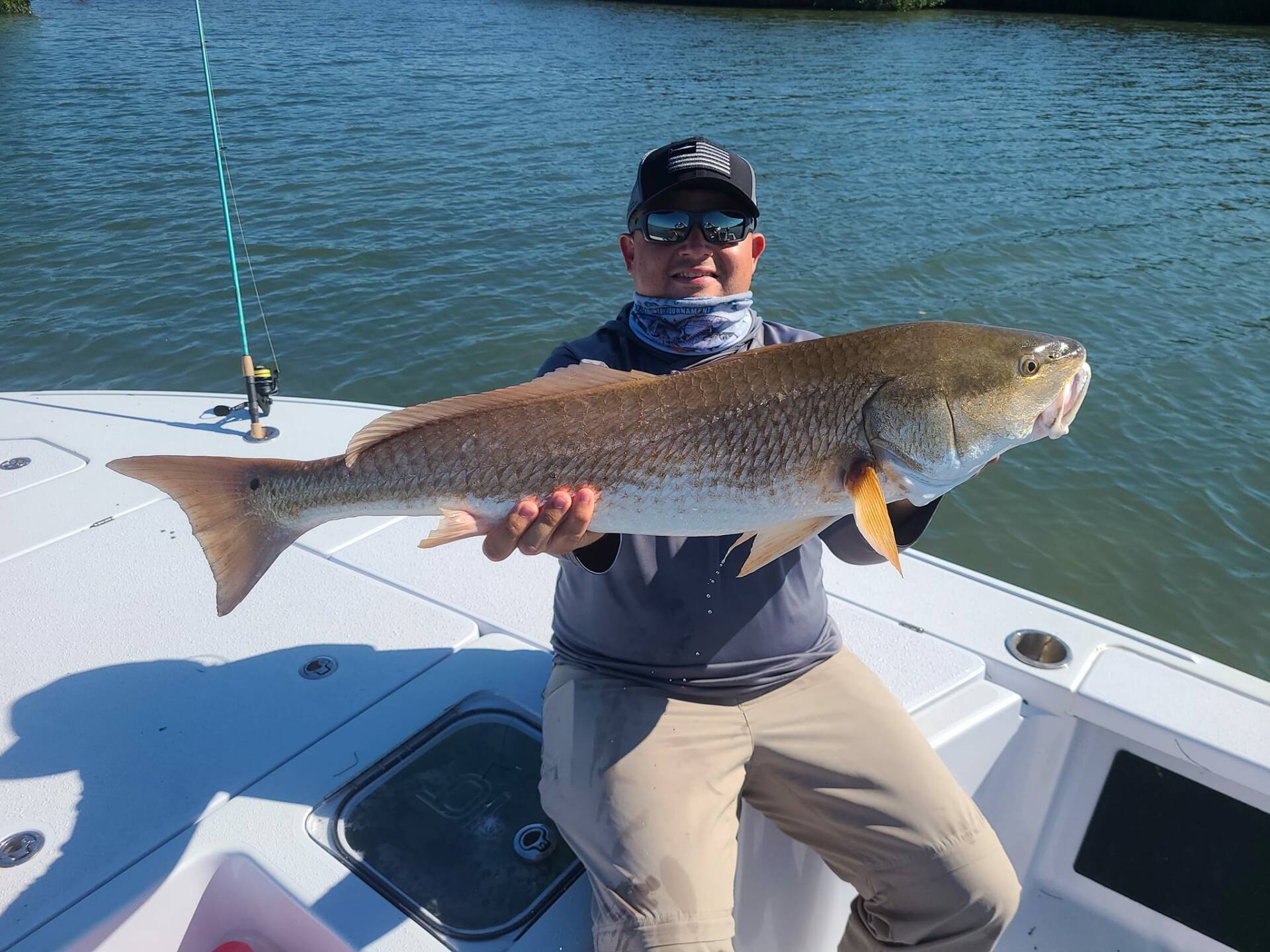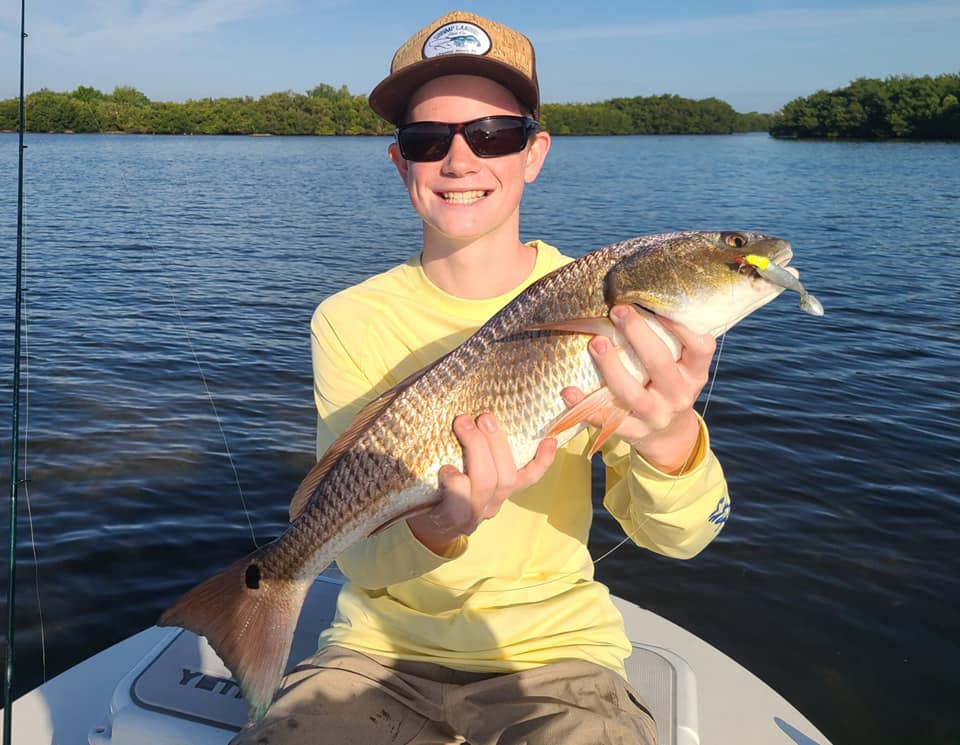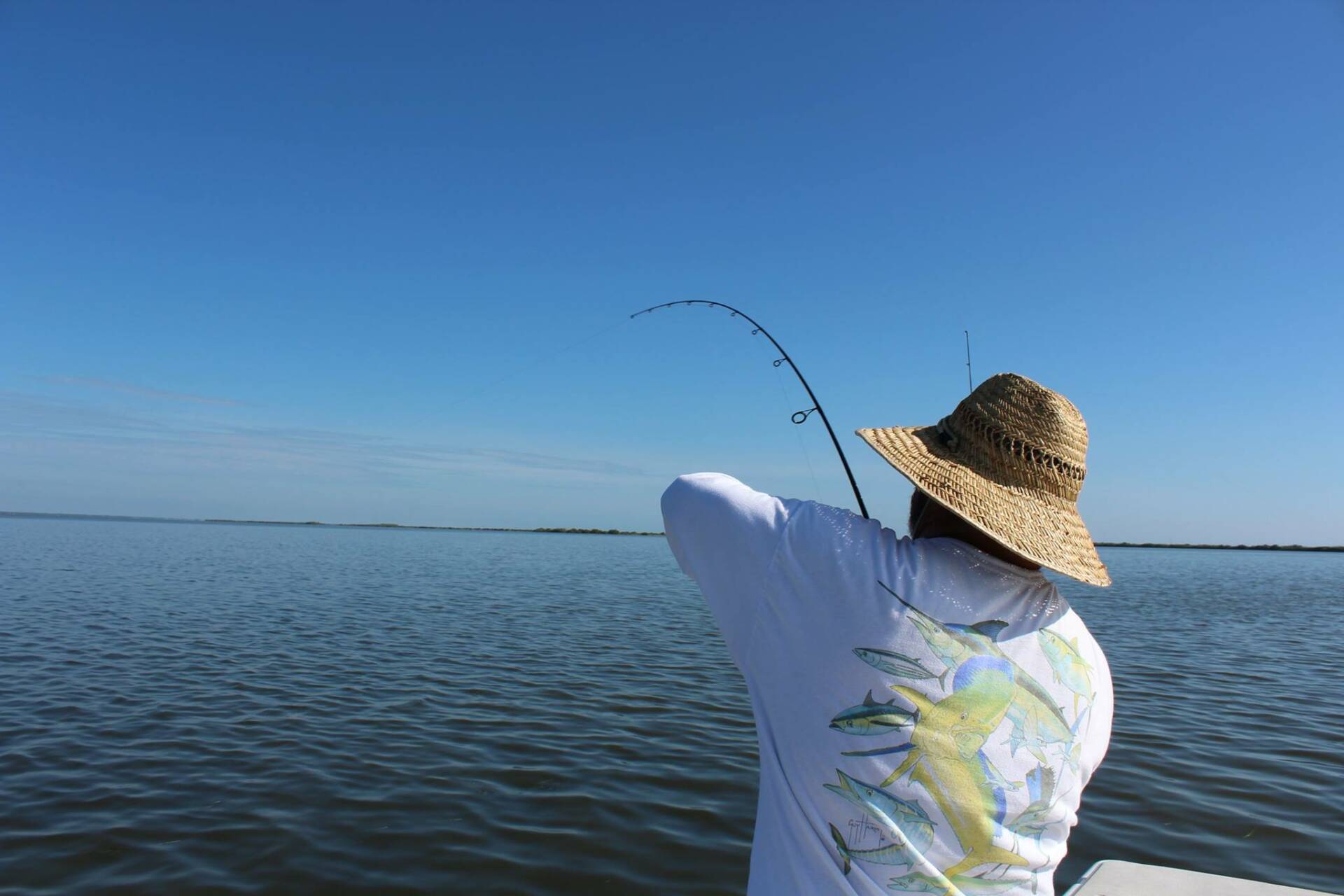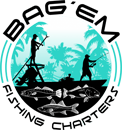Last Updated on October 24, 2025 by Eric
As the Gulf air chills and Tampa Bay’s clear waters begin to lose their summer warmth, the behavior of fish changes in ways that challenge even seasoned locals. Every cold front shapes the ecosystem differently, pushing bait deeper and slowing predator response times. For fishermen who know how to adapt, this seasonal transition creates one of the most technically interesting periods of the year. Mastering bait and lure adjustments during cold conditions turns frustration into precision, and it all starts with understanding how fish react as the temperature drops.
The Seasonal Shift Beneath the Surface
When temperatures fall, everything below the surface slows. Fish are cold-blooded animals, meaning their body temperature and metabolism mirror the water they inhabit. As the bay cools, their oxygen demand decreases, and their feeding windows shorten. Snook, redfish, trout, and sheepshead begin conserving energy, retreating from the shallows and hugging structure, mud bottoms, or channels where temperature stability gives them relief.
The baitfish and crustaceans they feed on follow the same instinct. Threadfin herring, scaled sardines, and glass minnows scatter or drop deeper into the water column, while shrimp and crabs settle into vegetation or hard structure. Because prey becomes less active, predatory fish shift from chasing mode to ambush mode. The strike zone narrows, but when approached correctly, it becomes predictable and rewarding.
Understanding Temperature Thresholds
In Tampa Bay, water temperature serves as a roadmap for what tactics will work best. Once readings dip below 68°F, redfish and trout begin moving into transitional areas like potholes and channels. At 63°F and below, many snook retreat to canals, docks, and rivers where heat lingers longer. These thresholds are not strict borders, but they indicate when to slow presentation speed and modify bait type.
During the coldest days, mid-day often becomes the most productive time. The sun’s low angle provides warmth to shallow mud flats and oyster bars, attracting bait and, shortly after, their predators. The movement of the sun and tide together can trigger short but explosive feeding windows that last less than an hour, so precision in timing becomes as important as gear selection.
Live Bait: The Subtle Approach
When water temperatures fall, live bait transforms from a general option into a strategic instrument. The goal is no longer to draw attention through speed but to maintain presence long enough to provoke a response. Shrimp, crabs, and cut bait dominate cold-season tactics for good reason: they move or scent naturally without requiring fast pursuit.
Choosing and Presenting Cold-Water Bait
- Live Shrimp: The universal cold-season bait for Tampa Bay. It stays lively in cooler conditions and can be free-lined near structure or drifted along current seams. Pinching off the tail and inserting the hook through the horn adds subtle action while keeping it upright.
- Cut Bait: When fish are hesitant, scent becomes king. Pieces of mullet or ladyfish placed on the bottom near deep holes or oyster bars remain effective for redfish and drum that rely on scent rather than sight in murky winter water.
- Blue Crabs: Quartered or halved crabs serve as excellent options for larger redfish. They are durable in cold conditions and maintain scent longer than softer bait.
- Pinfish: When used live, they are best deployed in deeper water where predators still hunt opportunistically. In colder shallows, their liveliness may exceed what nearby predators will chase.
The delivery method also matters. Slow drifts and stationary presentations outperform fast or frequent casting. Anchoring upstream of a dock or bridge piling and letting bait settle naturally along current edges can provoke strikes that never occur on a tight retrieve. Patience and positioning replace energy and motion.

Artificial Lures in Cold Water
Artificial lures remain effective in winter, but only when worked in rhythm with the slower metabolism of their targets. The most common mistake anglers make after a cold front is maintaining summer retrieval speed. In January or February, fish often need the lure to nearly stop before committing.
Lure Selection for Winter Conditions
- Soft Plastics on Jig Heads: Perhaps the most versatile option. Weighted jig heads allow contact with the bottom where fish rest, and subtle twitches send out enough vibration to draw attention. Paddle tails and flukes in muted natural tones imitate chilled baitfish perfectly.
- Suspending Jerkbaits: Designed to stay mid-water without floating or sinking quickly, they mimic dying baitfish that hang motionless before a faint dart. Long pauses between twitches trigger strikes from trout and snook waiting under docks or drop-offs.
- Scented Lures: Many artificial soft baits now incorporate built-in attractants. In cold water, scent can compensate for minimal movement. Use these near grass edges or potholes where fish hold still.
- Jigs with Shrimp or Crab Profiles: Particularly productive near bridges and rock piles where sheepshead, drum, and redfish congregate to feed on crustaceans clinging to structure.
Varying cadence is the heart of winter lure work. For example, on a calm 60-degree morning, one slow drag with a three-second pause might outfish any steady retrieve. Observing how long a lure can rest before the next twitch without losing appeal takes experimentation but pays enormous dividends once the timing clicks.
Reading the Bay: Finding the Right Water
Cold fronts drive fish to locations that maintain temperature consistency. Deep holes in the mouth of rivers, channel bends, and basins near mangroves hold warm layers where fish can remain active. Conversely, after two or three sunny days, shallow mud flats absorb heat and create micro-climates that concentrate fish in surprisingly thin water.
Watching tide and sunlight together provides insight. A rising tide that floods warmed flats around noon can suddenly fill with trout and redfish, while an outgoing evening tide draws them back toward the channel edges. By staying mobile and responsive to small changes, you can intercept these migrations at their most concentrated moments.
Structure becomes even more essential. Docks, bridge pilings, and seawalls radiate warmth absorbed during the day. The shadow line under a pier can mark a thermal divide where temperature differences of two degrees create noticeable feeding activity. Fish often hold inches from that line, waiting for shrimp or small fish to drift past.
Behavior of Key Tampa Bay Species
Redfish
Redfish tolerate cooler temperatures better than most local game species. They gather in groups around deep oyster bars and creek mouths. Live shrimp or scented soft plastics bounced slowly along the bottom tend to produce consistent bites. Their feeding peaks when water begins warming late in the morning.
Spotted Seatrout
Trout favor grass beds and sandy potholes but slide into deeper channels when cold fronts linger. Soft plastics, suspending jerkbaits, or live shrimp under popping corks work best in low-light conditions. On bright days, they retreat deeper and require quieter presentations.
Snook
Snook are the most temperature-sensitive of the trio. Prolonged cold snaps push them far up residential canals or power plant outflows where warmth persists. Once settled, they become highly structure-oriented. A slow-moving jerkbait, live shrimp, or small mullet presented near the pilings can trigger a sudden burst of aggression.
Sheepshead and Black Drum
These two species thrive when the others slow down. They feed on crustaceans and barnacles on pilings and rocky bottom. Fiddler crabs, cut shrimp, or small pieces of clam fished tight to structure produce steady action even during the coldest weeks.
Timing, Weather, and Water Clarity
After a cold front, the air may clear but the barometric change can suppress feeding for a day or two. The best window often opens 48 hours later, when wind calms and temperatures begin a slow climb. Clear skies may look appealing, but bright sunlight over cool water can make fish wary. On such days, subtlety in tackle and presentation becomes essential.
Water clarity also changes with seasonal wind direction. Northerly winds lower bay levels, exposing flats and stirring sediment. In these moments, darker-colored lures or scented bait gain importance because visibility is reduced. When the wind shifts east or south, clarity returns, allowing natural colors and lighter leaders to regain their advantage.

Practical Tactics for Cold Water Success
Cold water fishing demands methodical movement. Think of the bay as a series of thermal layers rather than static zones. Begin deep, test mid-depths, and only move shallow when signs of warming appear. This disciplined approach prevents wasted time and reduces pressure on inactive areas.
A few proven habits improve consistency:
- Keep a thermometer in your livewell or tackle box to track water temperature changes during the day.
- Use fluorocarbon leader material; winter water is often clearer and fish more cautious.
- Scale down terminal tackle to keep presentation delicate.
- Focus on sun-exposed shorelines during afternoon tides.
- Adjust expectations: cold water fishing rewards precision and timing more than quantity.
Every adjustment builds on observation. The first few hours of the morning may seem lifeless, but the same spot could ignite as sunlight reaches the right depth. When approached with patience, winter in Tampa Bay produces larger, healthier fish due to reduced competition and concentrated feeding.
Adapting Mindset and Technique
The most successful cold-season fishermen treat winter not as downtime but as a test of understanding. Each tide, temperature swing, and front offers information about how the ecosystem operates. The slowdown of fish behavior provides time to study patterns that summer chaos often hides. Every bait presentation becomes an experiment in balance: too fast and the fish lose interest, too slow and they may never notice. This deliberate pace turns fishing into a more intimate and thoughtful process, connecting the fisherman to subtler cues of the bay’s rhythm.
As the water clears and the crowds thin, Tampa Bay reveals its quieter personality. Redfish tailing under pale winter light or a speckled trout hovering over a grass pocket at midday remind anyone on the water that every season carries its own mastery to learn.
Staying Productive Through the Cold
Winter fishing in Tampa Bay is never about luck. It’s about method. Every strike confirms a series of correct choices; tide selection, bait presentation, and location timing. While many overlook this season in favor of spring or fall, those who continue refining their approach often experience the most memorable catches of the year. A calm day in January with light tide movement can deliver more satisfaction than any summer frenzy once the pieces come together.
Experience Tampa Bay’s Winter Fishing with Bag’em Fishing Charters
The quiet months reveal Tampa Bay at its most technical and rewarding. With the right knowledge, each trip becomes an education in precision and patience. The region’s winter ecology offers patterns and behaviors that can only be appreciated by those willing to adapt their methods and refine their awareness of water temperature, structure, and tide interaction. These subtleties form the foundation of every effective cold-season strategy.
Bag’em Fishing Charters brings that level of expertise to every outing, guiding fishermen through the seasonal shifts that define Tampa Bay’s ecosystem. Our captains use years of local experience to locate productive winter holding areas and tailor bait or lure presentation to the day’s exact conditions. For an experience that combines challenge, learning, and top-tier local knowledge, book a trip with Bag’em Fishing Charters today.


